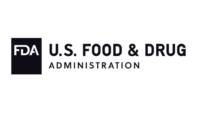2022 FDA Food Code is Being Adopted Three Times Faster Than Previous Versions, Reports NEHA

Image credit: Freepik
According to the National Environmental Health Association (NEHA), adoption of the most recent version of the U.S. Food and Drug Administration (FDA) Food Code is increasing across the country, reflecting a prioritization toward food safety. The 2022 version offers greater protection for consumers and businesses than previous versions by incorporating updated scientific findings and best practices, such as required plans to reduce allergic reaction risks and expanded allowances for food donations during emergencies.
The U.S. Centers for Disease Control and Prevention (CDC) estimates the national economic burden of foodborne illness to be more than $17.6 billion in lost productivity and healthcare costs annually. A single outbreak can cost up to an estimated $1.9 million for fast food restaurants and up to $2.6 million for a fine dining restaurant, cites NEHA.
The 2022 version is the most recent version of the model Food Code and reflects advancements in science and technology to ensure the code is responsive to evolving risks like food delivery and pop-up restaurants. A CDC study found that states that adopt key provisions from the Food Code experience lowered rates of foodborne norovirus outbreaks.
The newest version is being adopted by state retail food regulatory agencies three times faster than the previous versions were adopted. Indiana, New York, and Vermont, which currently follow the 2001 version, are in the process of adopting the 2022 version. At present, seven states and three territories have adopted the 2022 version. A new version of the Food Code is published every four years.
“We’re seeing states acting more quickly to align with the latest Food Code standards, which means safer food for consumers and less risk for restaurants and retail food outlets,” said Doug Farquhar, J.D., NEHA Government Affairs Director. “This update is the first some states have made in 20 years.”
NEHA’s Food Code Adoption Dashboard provides an interactive map and details about which versions of the Food Code have been adopted across the U.S.
Jurisdictions considering adopting a newer version of the Food Code can use the Food Code Adoption Toolkit with step-by-step instructions, templates, and training.
Looking for a reprint of this article?
From high-res PDFs to custom plaques, order your copy today!






